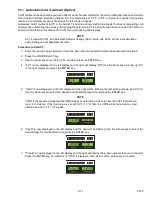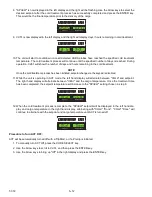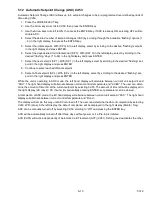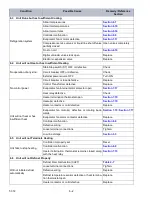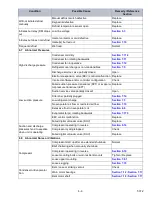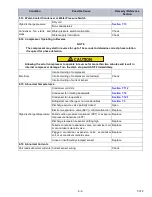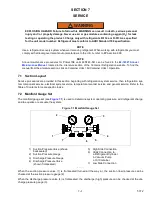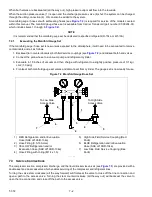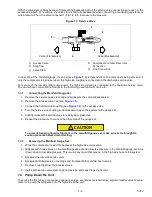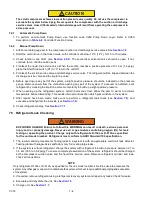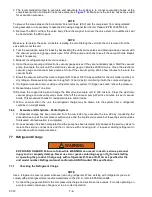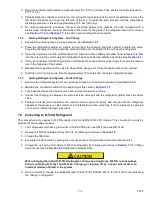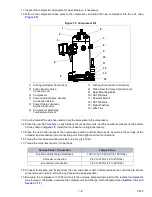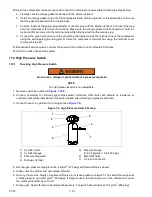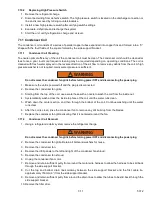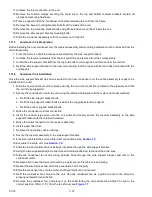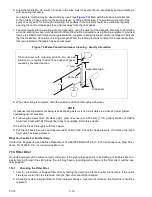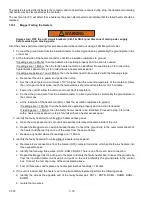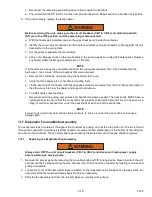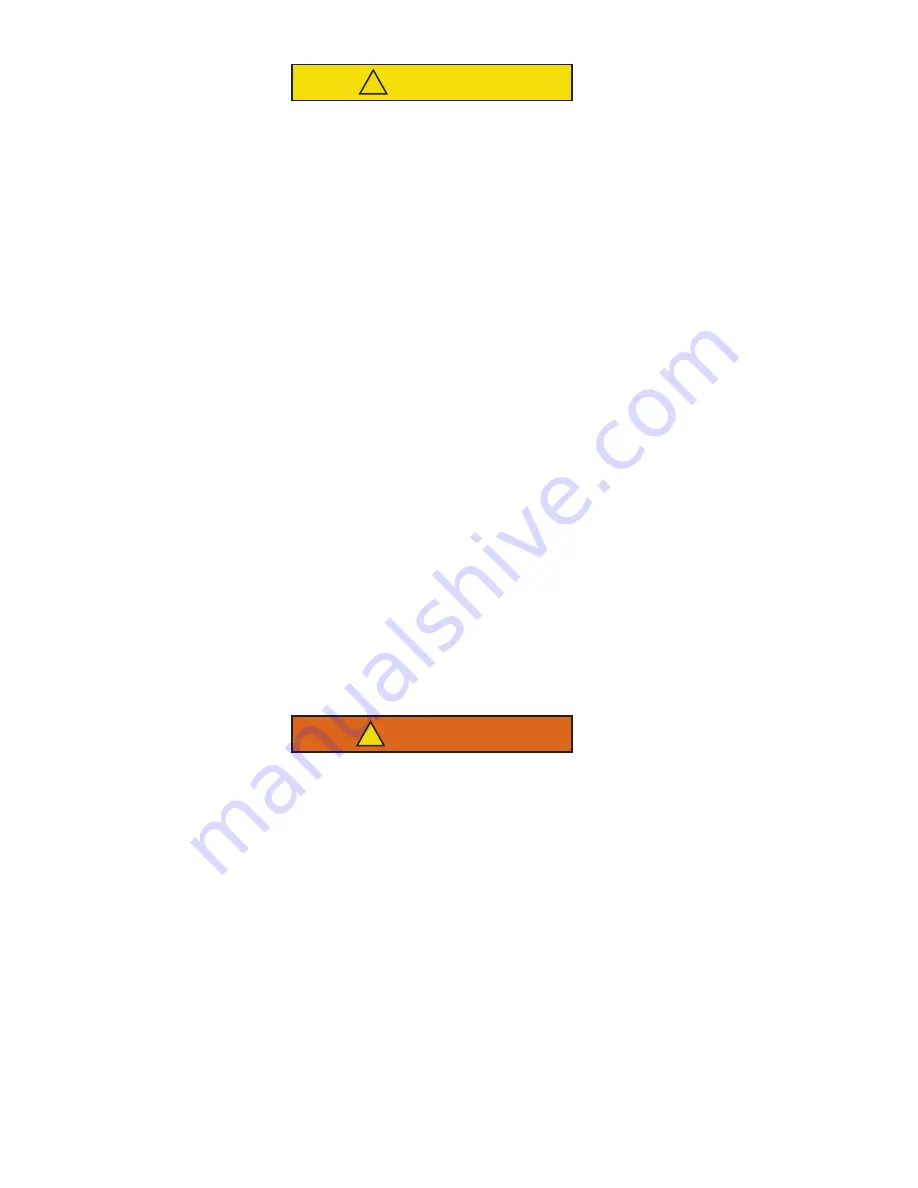
T-372
7–4
CAUTION
!
The scroll compressor achieves low suction pressure very quickly. Do not use the compressor to
evacuate the system below 0 psig. Never operate the compressor with the suction or discharge
service valves closed (frontseated). Internal damage will result from operating the compressor in
a deep vacuum.
7.4.1
Automatic Pump Down
1. To perform an Automatic Pump Down, use function code Cd59 Pump Down Logic. Refer to Cd59
description in
Controller Function Codes.
7.4.2
Manual Pump Down:
1. Attach manifold gauge set to the compressor suction and discharge service valves. See
2. Start the unit and run in the frozen mode, with controller set below -10°C (14°F), for 10 to 15 minutes.
3. Check function code Cd21 (see
). The economizer solenoid valve should be open. If not,
continue to run until the valve opens.
4. Frontseat the liquid line service valve. When the suction reaches a positive pressure of 0.1 bar (1.4 psig),
place the Start-Stop switch (ST) to “0” to turn the unit Off.
5. Frontseat the suction service valve and discharge service valve. The refrigerant will be trapped between the
discharge service valve and the liquid line valve.
6. Before opening up any part of the system, a slight positive pressure should be indicated on the pressure
gauge. Remove power from the unit before opening any part of the system. If a vacuum is indicated, emit
refrigerant by cracking the liquid line valve momentarily to build up a slight positive pressure.
7. When opening up the refrigerant system, certain parts may frost. Allow the part to warm to ambient
temperature before dismantling. This avoids internal condensation which puts moisture in the system.
8. After repairs have been made, make sure to perform a refrigerant leak check (see
), and
evacuate and dehydrate the low side (see
).
9. Check refrigerant charge. See
.
7.5 Refrigerant Leak Checking
WARNING
!
EXPLOSION HAZARD Failure to follow this WARNING can result in death, serious personal
injury and / or property damage. Never use air or gas mixtures containing oxygen (O
2
) for leak
testing or operating the product. Charge only with refrigerants R-134a or R-513A as specified
for the unit model number: Refrigerant must conform to AHRI Standard 700 specification.
1. The recommended procedure for finding leaks in a system is with an appropriate electronic leak detector.
Testing joints with soapsuds is satisfactory only for locating large leaks.
2. If the system is without refrigerant, charge the system with refrigerant to build up pressure between 2.1 to
3.5 bar (30.5 to 50.8 psig). To ensure complete pressurization of the system, refrigerant should be charged
at the compressor suction valve and the liquid line service valve. Remove refrigerant cylinder and leak-
check all connections.
NOTE
Only refrigerant R-134a or R-513A, as specified for the unit model number, should be used to pressurize the
system. Any other gas or vapor will contaminate the system, which will require additional purging and evacuation
of the system.
3. If required, remove refrigerant using a refrigerant recovery system and repair any leaks. Check for leaks.
4. Evacuate and dehydrate the unit. See
.
5. Charge unit. See
.


